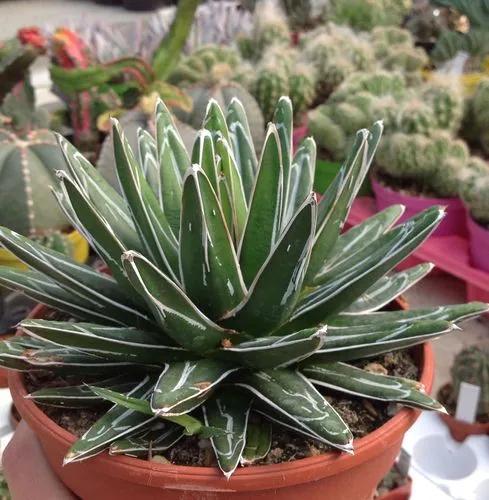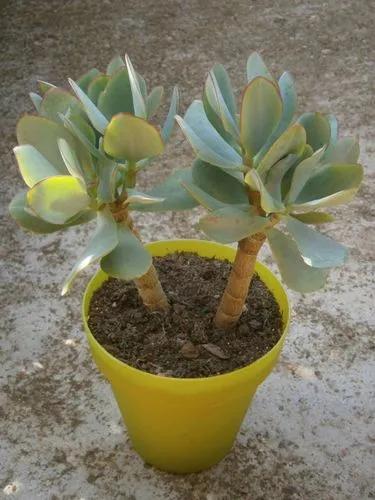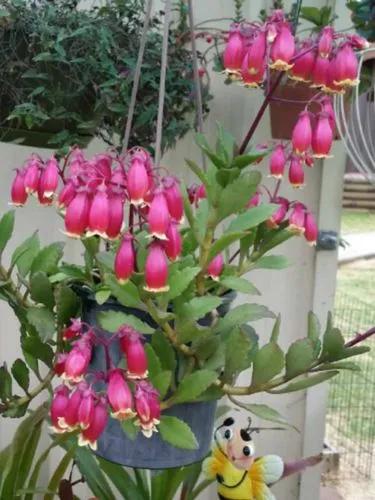Prickly but charming Ferocactus emoryi is a mesmerizing round-shaped Сactus that can add a touch of Wild West to any space. The large pricks look wary but still attract an eye with their mystery.
Emory's Barrel Cactus Care
Ferocactus emoryi



Commonly known as Emory's Barrel Cactus and Coville's Barrel Cactus, Ferocactus emoryi is a round-shaped Cactus belonging to the Ferocactus genus. Native to the deserts of Mexico, this plant is covered with eight long and firm spines that grow from each tubercle. The pricks are usually white in color; however, they can obtain reddish coloring. The plant produces impressive red and yellow flowers in July. The blooms consist of narrow-shaped petals arranged around numerous red stamens. Overall, the mature Cactus produces 15-10 ribs with a strong central spine.
How to Care for the Plant

Water

Give your greenie a drink once a week in summer and once every 2-3 weeks in winter when the Cactus goes dormant. Make sure the ground dries out completely before the hydration.

Pruning

It’s not a common practice to prune Emory's Barrel Cactus; however, it can be practiced for propagation.

Fertilizer

Use a cactus-specific fertilizer to give the greenie extra feeding. Dilute nourishment to the half-recommended dose and feed the Cactus monthly during the spring-summer growing season. Avoid fertilizing in winter.

Sunlight

Direct sunlight is what Emory's Barrel Cactus enjoys. Make sure the Cactus receives at least 6-8 hours of direct sunlight to maintain healthy growth.

Soil

It’s best to plant Coville's Barrel Cactus in a well-draining alkaline soil (6-8 pH). You can amend soil drainage by mixing in some sand or perlite. It’s important to put a few pebbles at the bottom of the pot to improve drainage.

Propagation

It’s best to propagate Coville's Barrel Cactus through the baby Cacti it produces. Cut a little Cactus at a 45-degree angle with a sharp blade. Leave it for several days to let the callus emerge. Afterward, plant a new Cactus into a well-draining soil mix.

Temperature

Growing indoors, Coville's Barrel Cactus would enjoy 75-85°F (24-30°C) temperature. It’s important to keep the plant away from cold drafts and not expose it to temperatures below 50°F (10°C).

Container

Growing Emory's Barrel Cactus at home, choose a bit bigger pot than the plant’s current root ball. It should be made of unglazed ceramic or terra cotta preferably to allow proper root aeration. The pot should also have at least one drainage hole.

Fun fact

Barrel Cacti are commonly known as ‘Compass Cacti’ because of their habit of leaning towards the south-west. Ingesting Coville's Barrel Cactus can cause severe health issues, as toxic alkaloids in the sap provoke digestive disorders.

Popularity

1,403 people already have this plant 94 people have added this plant to their wishlists

Common pests

Mealybugs are the most common culprits of this Cactus species. In case you see any webbing, treat the plant with an insecticide or neem oil.

Frequent diseases

Coville's Barrel Cactus can fall victim to root rot. It’s important to keep to a proper watering routine and not to waterlog the plant. In case the Cactus gets infected with the disease, remove the affected roots and replant it with a fresh soil mix.

Botanist’s tips

Discover more plants with the list below
Popular articles






